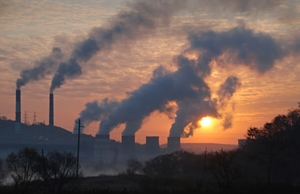The term ‘flue gas’ refers to the hot gas emissions that are generated during the combustion process and emitted via a building’s chimney or flue.
In the past, flue gas analysis was time consuming and expensive. However, modern advancements in technology mean that analysing flue gas is now cheaper and easier than ever before.
Here is a basic guide to flue gas analysis, and the importance of conducting such tests on a regular basis.
What does flue gas consist of?
The actual composition of flue gas will depend largely on what is being burned and how. However, flue gas typically consists of the following:
- Carbon dioxide
- Nitrogen
- Sulfur
- Water vapour
- Oxygen
- Carbon Monoxide
- Solids (dust, soot)
- and a number of other pollutants
Of those emissions, carbon dioxide and nitrogen are the most harmful. They are both dangerous to humans and can also have a significant environmental impact, damaging the ozone and contributing to global warming.
Fortunately, the amount of air pollutants carried in flue gas can be mitigated through the use of dedicated purification units and switching to low-emission fuels. However, in order to monitor and control such processes, it is important that you are conducting regular flue gas analysis.
Why should I conduct flue gas analysis?
Flue gas can tell you a lot about the performance of a heating system or power generation plant. Regular flue gas analysis is a great way of ensuring that the plant is achieving optimal efficiency at all times.
Flue gas analysis will give you an indication of whether or not you are achieving maximum possible carbon combustion in your fuel.
You can also analyse your flue gas in order to determine environmental impact and whether you are maintaining compliance with local emissions regulations.
Australia is known to have very stringent emission standards when it comes to pollutants and emissions, so regular flue gas analysis is a necessary part of meeting those regulations and ensuring both legal and ethical obligations are maintained.
What tools are available for flue gas analysis?
The right flue gas analysis for your needs will depend mainly on what type of generator you are studying.
Different devices come with a variety of different features. Some analysis tools come with specially designed printers that enable users to quickly and easily create simple, clear reports while on the work site.
If you simply intend to take basic measurements on small-scale firing installations, then an affordable solution such as testo 310 Flue Gas Analyser Set 1 will be more than sufficient.
This device is capable of taking readings on CO, O2 and CO2 levels. It can also measure the ambient CO, draught and pressure of your flue gas.
Alternatively, anyone analysing larger combustion plants, an industrial engine, a gas turbine or an industrial furnace, will need a top of the line solution such as the testo 350 Multiple Sensor Gas Analysis System.
This significantly more sophisticated tool is capable of measuring six gases simultaneously. It has 10 pre-calibrated sensors which can reliably measure O2, CO, COlow, NO, NOlow, NO2 ,CO2, IR, SO2, H2S and CxHy.
If you are unsure about which flue gas analysis tool is best for you, consider getting in touch with an expert who can talk you through your options and help you identify a cost-effective yet reliable solution.
Want to know more?
As the world leader in portable and stationary measurement equipment, Testo is an authority on flue gas and flue gas analysis.
Testo stocks a wide variety of devices designed to measure, analyse and document flue gas and determine whether combustion systems are running at the optimum settings and meeting environmental compliance rulings.
Contact us today for more information.









 Reduce cooking oil costs while ensuring quality
Reduce cooking oil costs while ensuring quality Expert knowledge on CO2 monitoring
Expert knowledge on CO2 monitoring Refrigeration knowledge - in 3 modules
Refrigeration knowledge - in 3 modules



